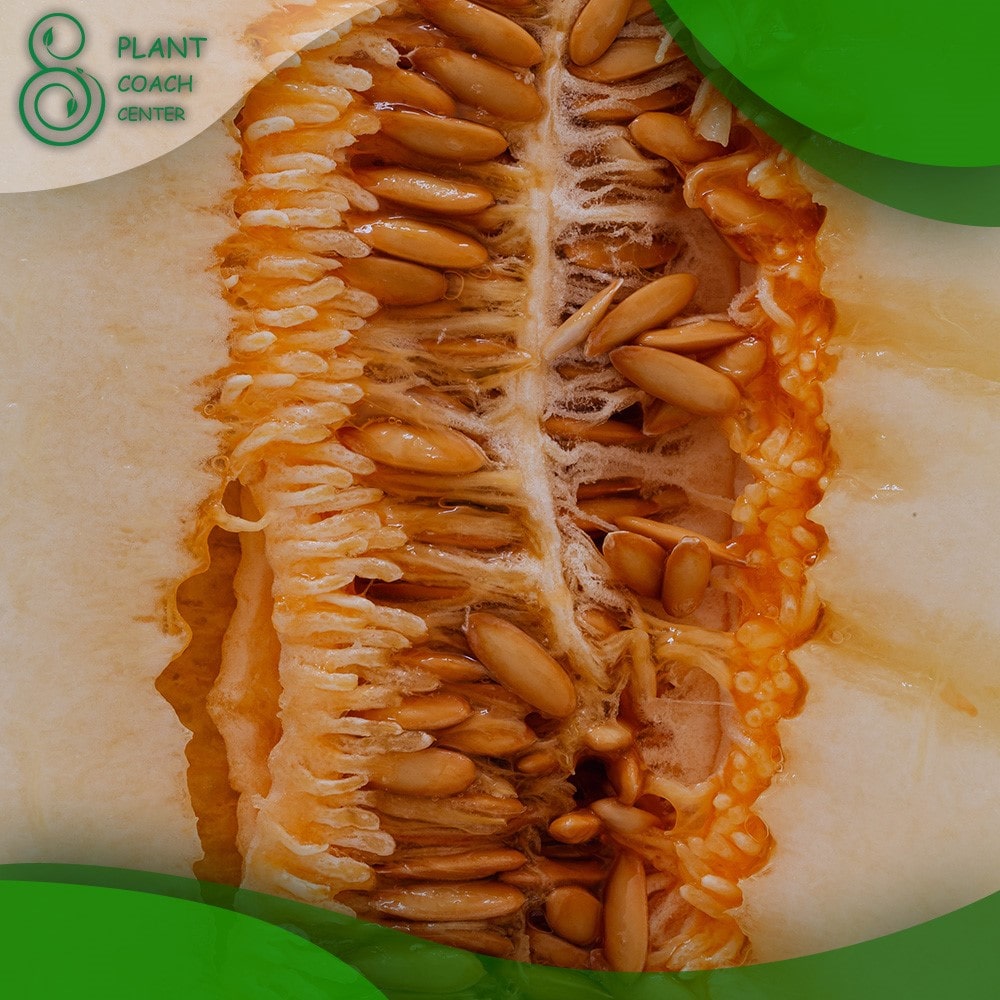When Do You Plant Cantaloupe?
Welcome to plantcouchcenter.com, where we dive into the gardening world and cultivate a green sanctuary of knowledge. If you’re a fruit enthusiast or a gardening aficionado seeking to add a splash of sweetness to your harvest, you’ve come to the right place! In this article, we’ll embark on an exciting journey to unravel the secrets of when to plant cantaloupe – that luscious and mouthwatering melon that brings joy to summer tables.
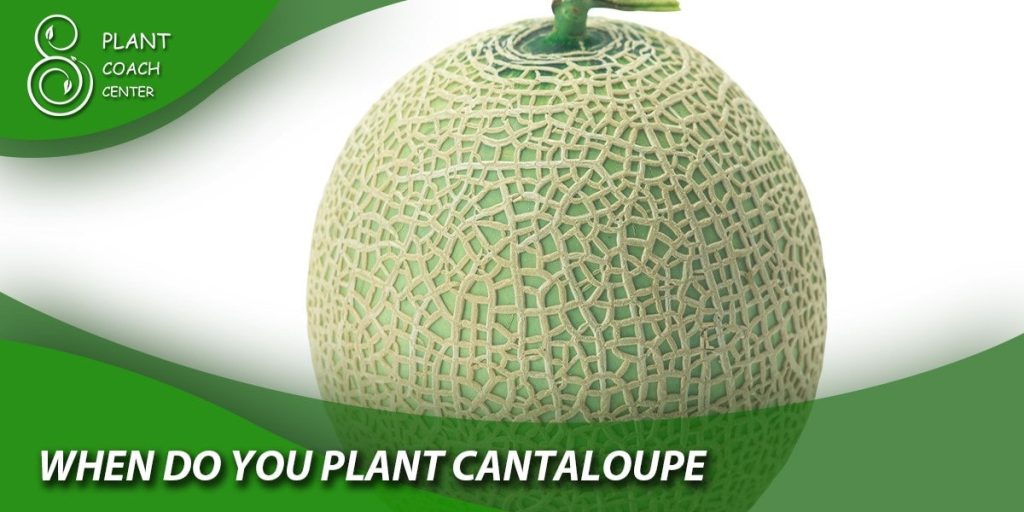
Growing cantaloupe can be a rewarding experience, but timing is everything when it comes to ensuring a bountiful and succulent yield. Whether you’re a novice gardener eager to learn the ropes or a seasoned pro looking for fresh insights, we’ve got you covered.
From understanding the ideal planting season to exploring the crucial factors contributing to cantaloupe success, let’s dig deep into the art and science of cultivating this delectable fruit. So, put on your gardening gloves, and let’s begin our flavorful exploration of when and how to plant cantaloupe for a fruitful and fulfilling harvest!
Choosing the Perfect Planting Time for Cantaloupe
Timing plays a pivotal role in the successful cultivation of cantaloupe, as this sun-loving fruit thrives under specific climatic conditions. The ideal planting time for cantaloupe varies depending on your geographical location, but several key factors remain constant.
Seasonal Considerations: Cantaloupe is a warm-season crop that requires ample sunlight and heat to flourish. As a general rule, wait until all danger of frost has passed before planting. In regions with short growing seasons, starting cantaloupe indoors as seedlings a few weeks before the last frost date can give your plants a head start.
Soil Temperature: The soil temperature is critical to consider when determining the best planting time for cantaloupe. The soil should be consistently warm, with temperatures around 70°F (21°C) or higher. The more excellent ground can impede germination and hinder plant growth.
Growing Zone: Understanding your specific USDA plant hardiness zone can provide valuable guidance on when to plant cantaloupe. Different zones experience distinct growing seasons, and planting too early or late may lead to suboptimal results.
Air Temperature: While cantaloupe loves warmth, extreme heat can harm its growth. Aim for planting when daytime temperatures consistently reach around 70-85°F (21-29°C) for the best results.
Moisture Levels: Adequate moisture is crucial during germination and early growth. Planting just before regular rainfall can help establish young cantaloupe plants and reduce the need for excessive watering.
Consider Companion Plants: Companion planting with certain vegetables and herbs can benefit cantaloupe growth by providing shade, repelling pests, or attracting beneficial insects. Understanding which plants work well together can optimize your garden’s productivity.
By considering these factors and aligning your planting schedule with nature’s cues, you can set the stage for a thriving cantaloupe harvest. Patience and precision are essential, as choosing the perfect planting time will reward you with abundant sweet, juicy cantaloupes to savor throughout the summer months. Happy planting!
Seasonal Splendor: Aligning Cantaloupe Planting with Nature’s Rhythms
Nature operates on its own rhythm, and when it comes to planting cantaloupe, attuning yourself to these natural cycles can significantly enhance the success of your harvest. Understanding the seasonal cues and making mindful choices can ensure that your cantaloupe plants thrive and bear fruit at the right time.
Embracing the Warmth
Cantaloupes are true sun-worshippers and perform best when the days are long and the temperatures are warm. As spring transitions into summer, the increasing sunlight and rising mercury levels signal the perfect time to sow cantaloupe seeds or transplant seedlings into your garden.
Observing Frost Danger
Cantaloupes are susceptible to frost damage, and planting them too early can be disastrous. Keep a close eye on the weather forecasts and be prepared to protect your young plants with row covers or other makeshift shelters if a late-season frost threatens your region.
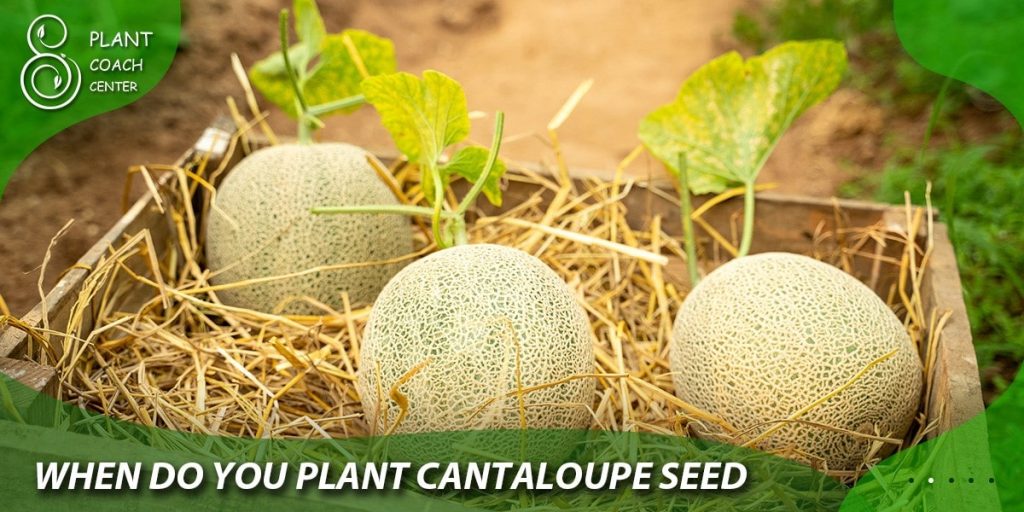
Gauging Soil Readiness
Nature gives us subtle signs to gauge when the soil is ready for planting. Before sowing cantaloupe seeds, take a handful of soil and squeeze it gently. If the ground clumps together and feels warm to the touch, it’s likely ready. Crumbly, cold soil indicates that it’s still too early.
Paying Attention to Daylight Hours
Cantaloupe plants respond to the length of daylight. As the days shorten towards the end of summer, the growth rate of the plants may slow down. However, this is natural, and the melons will continue to ripen on the vine until they are ready for harvest.
Working with Nature’s Calendar
Consider consulting a local gardening calendar or almanac to determine the best planting dates for cantaloupe in your region. These resources consider historical weather patterns and can be valuable references for successful planting.
Following Moon Phases
Some gardeners believe that planting cantaloupe during specific moon phases can influence the yield and flavor of the fruit. While scientific evidence may be limited, experimenting with lunar planting calendars can be a fun and fascinating way to engage with nature’s rhythms.
Frost-Free Fun: Understanding the Optimal Temperature for Cantaloupe Planting
CanWiths succulent and sweet flesh, the cantaloupe lives in warm weather conditions. To ensure a successful and fruitful harvest, it is essential to comprehend the optimal temperature requirements for planting this delectable melon. Avoiding frost and providing the proper environmental conditions are critical factors in achieving bountiful yields of mouthwatering cantaloupes.
The Perils of Frost
Cantaloupe plants are highly sensitive to frost, and even a brief exposure to freezing temperatures can cause severe damage or kill young seedlings. Before planting, check your region’s average last frost date to ensure you will be aware of any late-season chills.
Germination Temperature
Cantaloupe seeds germinate best in warm soil, typically between 70°F to 90°F (21°C to 32°C). Planting when the ground has reached this temperature range will encourage quick and successful germination, giving your cantaloupe plants a head start in their growth.
Optimal Air Temperature
Once your cantaloupe plants are established, they will thrive in daytime temperatures ranging from 75°F to 85°F (24°C to 29°C). These warm temperatures support healthy growth and encourage the development of sweet, flavorful fruit.
Watch Out for Extreme Heat
While cantaloupes love warmth, excessively high temperatures can negatively impact their growth and fruiting. When the mercury climbs above 95°F (35°C), melon plants may experience stress, resulting in reduced yields and potential sunburn on the fruit. Providing shade or using mulch can help mitigate the effects of extreme heat.
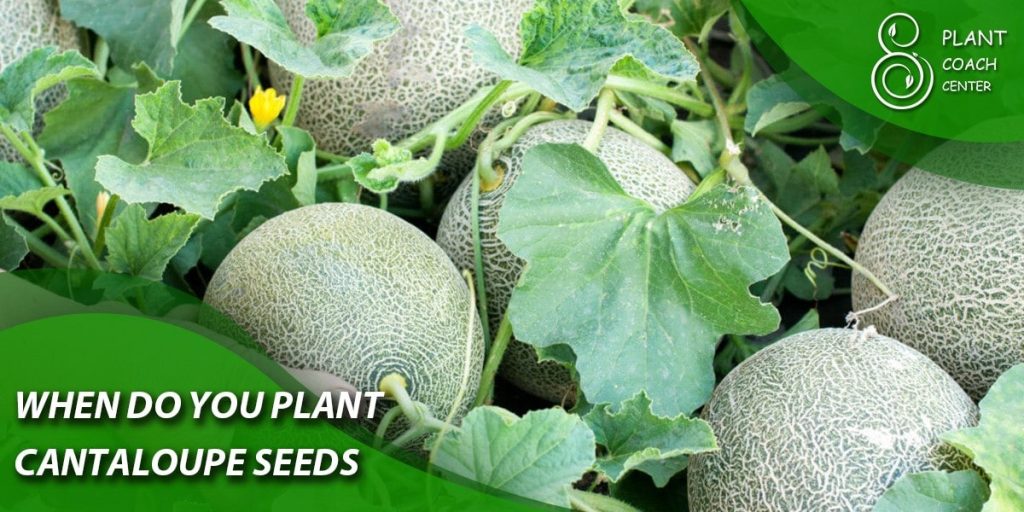
Extended Warm Growing Season
Cantaloupes generally require around 70 to 100 days from planting to harvest, depending on the variety. Ensure that your growing season is long enough to accommodate the time it takes for the melons to mature. Consider choosing early-maturing or fast-growing cantaloupe varieties if you have a shorter growing season.
Monitoring Microclimates
Different areas of your garden or growing space may experience microclimates with slightly different temperature conditions. To optimize their growth, pay attention to these variations and plant your cantaloupes in the warmest and most sheltered spots.
Sowing the Seeds of Success: Best Practices for Cantaloupe Planting
Growing cantaloupes can be a rewarding experience, and sowing the seeds with care sets the foundation for a successful harvest. By following these best practices for cantaloupe planting, you can ensure that your melon patch thrives and yields an abundance of delicious, sun-kissed fruit.
Site Selection
Choose a planting site that receives full sun throughout the day. Cantaloupes love warmth and require at least 6 to 8 hours of direct sunlight for optimal growth and fruit development. Ensure the area has well-draining soil to prevent waterlogged roots, which can lead to plant stress and disease.
Soil Preparation
Prepare the soil before planting by loosening it to a depth of 12 to 18 inches (30 to 45 cm) and incorporating organic matter, such as compost or well-rotted manure. This enriches the soil with essential nutrients and improves its ability to retain moisture.
Planting Method
Cantaloupes can be grown through direct seeding or transplanting. Direct seeding involves sowing the seeds into the garden soil once all frost danger has passed. Transplanting, on the other hand, consists in starting the seeds indoors and later moving the seedlings to the garden. Transplants can give your cantaloupe plants a head start, especially in regions with shorter growing seasons.
Seed Spacing and Depth
Plant cantaloupe seeds about 1 inch (2.5 cm) deep and space them 12 to 24 inches (30 to 60 cm) apart, with rows spaced 5 to 6 feet (1.5 to 1.8 meters) apart. Providing adequate space between plants improves air circulation and reduces disease risk.
Watering
Keep the soil moist but not waterlogged, especially during germination and fruit development. Avoid overhead watering, as wet foliage can promote fungal diseases. Instead, use a drip irrigation system or water at the base of the plants to deliver water directly to the roots.
Mulching and Weed Control
Apply a layer of organic mulch, such as straw or wood chips, around the base of the plants. Mulching helps retain soil moisture, suppress weeds, and regulate soil temperature. Regularly remove weeds that may compete with your cantaloupe plants for nutrients and water.
Support for Vining Varieties
If you’re growing vining varieties of cantaloupe, support the fruit as they develop. You can use trellises or slings made of fabric or mesh to cradle the growing melons, preventing them from touching the ground and reducing the risk of rot.
Pollination
Cantaloupes rely on pollinators, especially bees, for successful fruit sets. Encourage pollinators to visit your garden by planting nectar-rich flowers nearby and avoiding harmful pesticides.
By following these best practices for cantaloupe planting, you can set your garden on the path to success. With the proper care and attention, your cantaloupe plants will flourish, rewarding you with a delightful harvest of juicy and sweet melons to enjoy all summer. Happy planting!
Location, Melon: Picking the Ideal Spot for Cantaloupe Growth
When cultivating cantaloupes, the old real estate adage holds true: location matters. Selecting the perfect spot for your cantaloupe patch can make a significant difference in your plants’ health, growth, and productivity. Consider these factors to pick the ideal location to set your cantaloupes up for success.
Sunlit Splendor
Cantaloupes are sun-loving plants, and choosing a location with total sun exposure is crucial. Aim for a spot that receives at least 6 to 8 hours of direct sunlight daily. More sunlight means more energy for the plants to thrive and produce plenty of sweet, juicy melons.
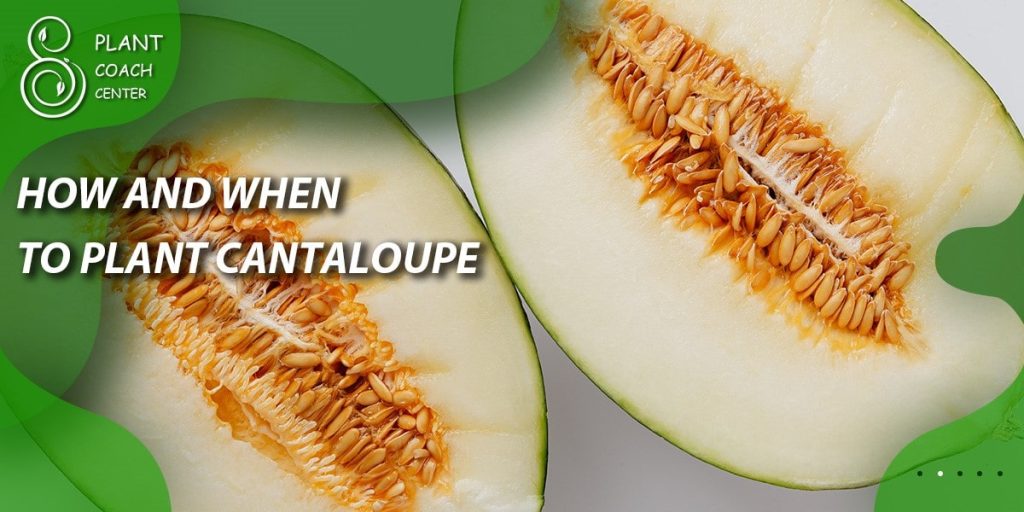
Wind Protection
While cantaloupes adore sunshine, they are not fans of strong winds. High winds can stress the plants, damage delicate foliage, and hamper pollination. Select a site sheltered from solid gusts by positioning it behind a windbreak like a fence or using nearby structures and vegetation for protection.
Proper Drainage
Cantaloupes dislike soggy feet, so ensure the chosen location has excellent drainage. Avoid areas prone to waterlogging or flooding, as excessively wet soil can lead to root rot and other moisture-related issues. If your garden has poor drainage, consider building raised beds to improve the soil’s water management.
Garden Space
Cantaloupes are sprawling vines that require ample space to spread their leaves and vines. Each plant can cover an area of 5 to 6 feet (1.5 to 1.8 meters) in diameter. Ensure enough space between each plant to avoid overcrowding and promote good air circulation.
Soil Quality
Cantaloupes thrive in well-draining, nutrient-rich soil. Conduct a soil test to assess the pH and nutrient levels. Aim for a slightly acidic to neutral pH range of 6.0 to 7.5. If the soil lacks essential nutrients, amend it with organic matter, such as compost or well-rotted manure, to improve fertility.
Proximity to Pollinators
Cantaloupes require pollinators, particularly bees, for a successful fruit set. To increase the chances of pollination, place your cantaloupe patch near other flowering plants that attract bees and pollinators. This will encourage these helpful insects to visit your garden regularly.
Vertical Growing Options
If space is limited, consider using vertical gardening techniques for cantaloupes. Growing them on trellises, A-frames, or fences saves space and keeps the fruit off the ground, reducing the risk of rot and pest damage.
From Seedlings to Sweetness: Tracking Cantaloupe Growth Stages
Watching cantaloupe plants progress through their growth stages is fascinating, culminating in the sweet reward of ripe and juicy melons. Understanding these growth stages can help you monitor your plants’ development, provide appropriate care, and anticipate the arrival of the delectable harvest.
Germination (Days 4-10)
The journey begins with planting cantaloupe seeds in warm, well-prepared soil. Under optimal conditions, the seeds germinate within 4 to 10 days. During this stage, ensure the soil stays consistently moist to support successful seedling emergence.
Seedling Stage (Days 10-20)
As the cotyledons (the first leaves) unfurl, the seedlings start their upward journey. At this point, it’s essential to maintain a watchful eye for pests, diseases, and extreme weather conditions. Provide regular watering and protect young seedlings from strong winds and excessive sunlight.
Vine Growth (Weeks 3-4)
Cantaloupe plants are vigorous climbers, and during this stage, they focus on developing robust vines and expanding their foliage. Proper spacing and support, if needed, become crucial to accommodate the plants’ growth and ensure good air circulation.
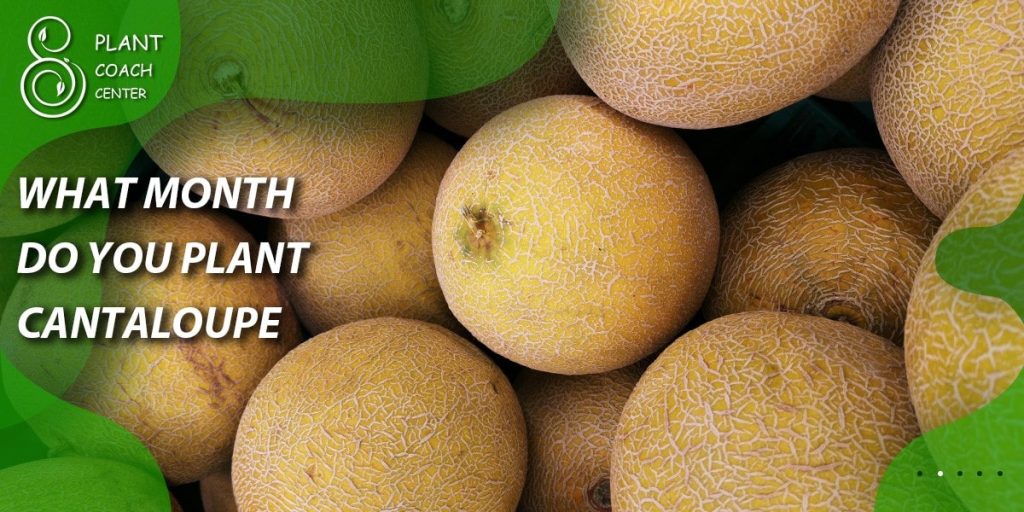
Flowering (Weeks 4-6)
As the vines mature, they produce beautiful, bright yellow flowers. These flowers are essential for the next cantaloupe life cycle stage: pollination. Attract pollinators like bees to your garden by planting pollinator-friendly flowers nearby or using companion planting techniques.
Pollination (Weeks 6-7)
Successful pollination is the gateway to fruit formation. Bees play a crucial role in transferring pollen from male to female flowers. You can also hand-pollinate the flowers by gently transferring pollen with a small brush from the male to the female blooms.
Fruit Development (Weeks 7-10)
With successful pollination, tiny green cantaloupes appear at the female flowers’ base. During this stage, the fruit rapidly grows in size and gradually changes color, transforming from green to the characteristic golden hue as it matures.
Ripening (Weeks 10-12)
The long-awaited moment arrives as the cantaloupes approach maturity. You can track ripeness by observing the fruit’s skin, which changes from green to beige and develops a fragrant aroma. Gently press the blossom end – a slight softness indicates readiness for picking.
Harvest Time (Weeks 10-12)
Harvest the cantaloupes at their peak ripeness. Cut the fruit from the vine with a sharp knife, leaving a short stem attached. Once harvested, allow the melons to sit at room temperature for a day or two to enhance their sweetness before refrigerating.
Conclusion
In conclusion, planting cantaloupe is a delightful and rewarding endeavor that requires careful consideration of various factors. By embracing the knowledge shared in this article, you can confidently embark on your cantaloupe-growing journey with insights into choosing the perfect planting time, aligning with nature’s rhythms, understanding temperature requirements, picking an ideal location, and tracking growth stages.
The information provided here empowers you to make informed decisions, fostering healthy plant development and maximizing your chances of a plentiful and succulent harvest. Remember to visit plantcouchcenter.com for more gardening tips, tricks, and inspiration as we cultivate a green sanctuary of knowledge for fruit enthusiasts and gardening aficionados alike.
Happy planting, and may your cantaloupe patch flourish with sweetness and abundant joy throughout the growing season!
When is the best time to plant cantaloupe?
Cantaloupe is planted after the danger of frost has passed, in warm soil temperatures around 70°F or higher.
Can I grow cantaloupe indoors?
You can start cantaloupe seeds indoors a few weeks before the last frost date and later transplant them outside.
How long does it take for cantaloupe to mature?
Cantaloupes typically take around 70 to 100 days from planting to harvest, depending on the variety and growing conditions.


